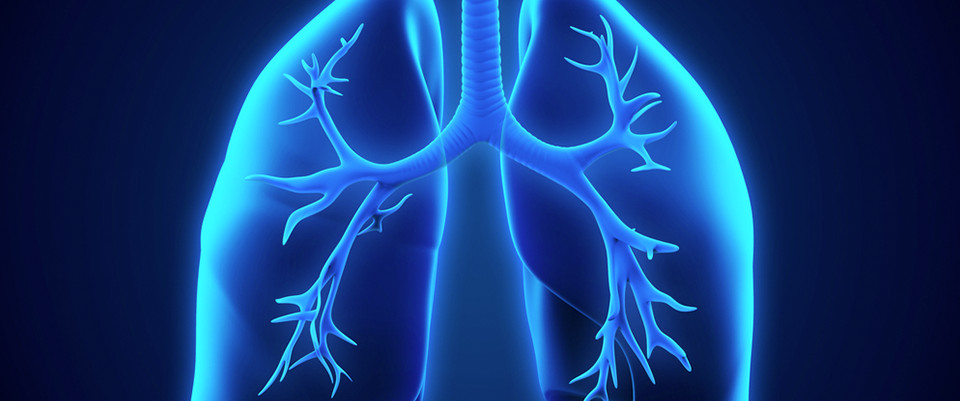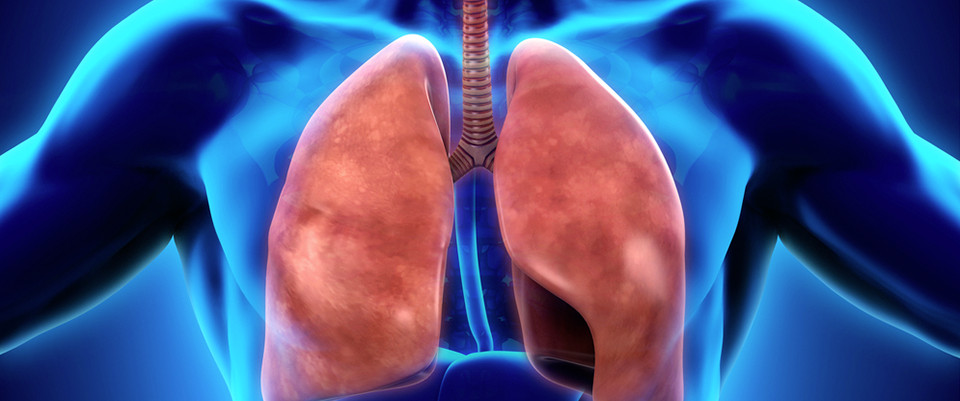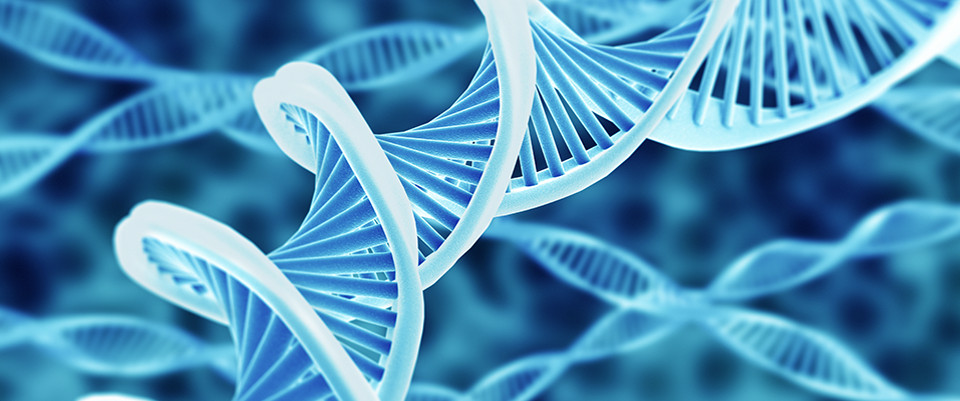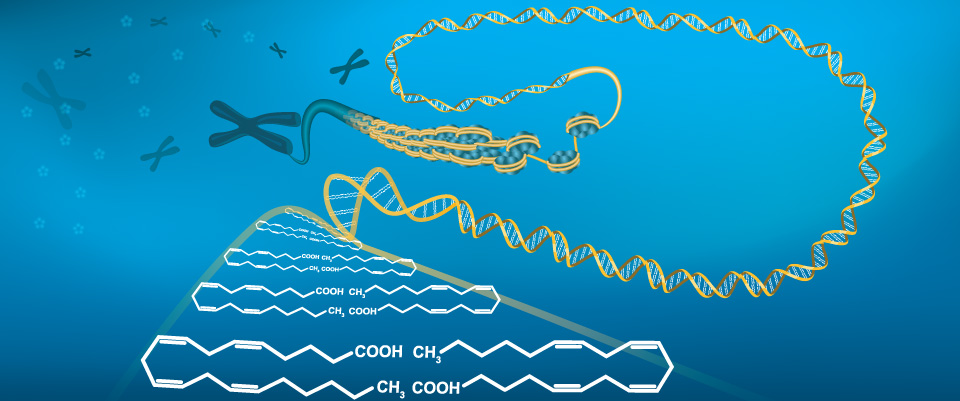PubMed
Evaluation of drug-induced neurotoxicity based on metabolomics, proteomics and electrical activity measurements in complementary CNS in vitro models.
Related Articles
Evaluation of drug-induced neurotoxicity based on metabolomics, proteomics and electrical activity measurements in complementary CNS in vitro models.
Toxicol In Vitro. 2015 May 27;
Authors: Schultz L, Zurich MG, Culot M, Costa AF, Landry C, Bellwon P, Kristl T, Hörmann K, Ruzek S, Aiche S, Reinert K, Bielow C, Gosselet F, Cecchelli R, Huber CG, Schroeder OH, Gramowski-Voss A, Weiss DG, Bal-Price A
Abstract
The present study was performed in an attempt to develop an in vitro integrated testing strategy (ITS) to evaluate drug-induced neurotoxicity. A number of endpoints were analyzed using two complementary brain cell culture models and an in vitro blood-brain barrier (BBB) model after single and repeated exposure treatments with selected drugs that covered the major biological, pharmacological and neuro-toxicological responses. Furthermore, four drugs (diazepam, cyclosporine A, chlorpromazine and amiodarone) were tested more in depth as representatives of different classes of neurotoxicants, inducing toxicity through different pathways of toxicity. The developed in vitro BBB model allowed detection of toxic effects at the level of BBB and evaluation of drug transport through the barrier for predicting free brain concentrations of the studied drugs. The measurement of neuronal electrical activity was found to be a sensitive tool to predict the neuroactivity and neurotoxicity of drugs after acute exposure. The histotypic 3D re-aggregating brain cell cultures, containing all brain cell types, were found to be well suited for OMICs analyses after both acute and long term treatment. The obtained data suggest that an in vitro ITS based on the information obtained from BBB studies and combined with metabolomics, proteomics and neuronal electrical activity measurements performed in stable in vitro neuronal cell culture systems, has high potential to improve current in vitro drug-induced neurotoxicity evaluation.
PMID: 26026931 [PubMed - as supplied by publisher]
Molecular signature of amniotic fluid derived stem cells in the fetal sheep model of myelomeningocele.
Related Articles
Molecular signature of amniotic fluid derived stem cells in the fetal sheep model of myelomeningocele.
J Pediatr Surg. 2015 Apr 28;
Authors: Ceccarelli G, Pozzo E, Scorletti F, Benedetti L, Cusella G, Ronzoni FL, Sahakyan V, Zambaiti E, Mimmi MC, Calcaterra V, Deprest J, Sampaolesi M, Pelizzo G
Abstract
Abnormal cord development results in spinal cord damage responsible for myelomeningocele (MMC). Amniotic fluid-derived stem cells (AFSCs) have emerged as a potential candidate for applications in regenerative medicine. However, their differentiation potential is largely unknown as well as the molecular signaling orchestrating the accurate spinal cord development. Fetal lambs underwent surgical creation of neural tube defect and its subsequent repair. AFSCs were isolated, cultured and characterized at the 12th (induction of MMC), 16th (repair of malformation), and 20th week of gestation (delivery). After performing open hysterectomy, AF collections on fetuses with sham procedures at the same time points as the MMC creation group have been used as controls. Cytological analyses with the colony forming unit assay, XTT and alkaline-phosphatase staining, qRT-PCR gene expression analyses (normalized with aged match controls) and NMR metabolomics profiling were performed. Here we show for the first time the metabolomics and molecular signature variation in AFSCs isolated in the sheep model of MMC, which may be used as diagnostic tools for the in utero identification of the neural tube damage. Intriguingly, PAX3 gene involved in the murine model for spina bifida is modulated in AFSCs reaching the peak of expression at 16weeks of gestation, 4weeks after the intervention. Our data strongly suggest that AFSCs reorganize their differentiation commitment in order to generate PAX3-expressing progenitors to counteract the MMC induced in the sheep model. The gene expression signature of AFSCs highlights the plasticity of these cells reflecting possible alterations of embryonic development.
PMID: 26026346 [PubMed - as supplied by publisher]
Targeted arginine metabolomics: A rapid, simple UPLC-QToF-MS(E) based approach for assessing the involvement of arginine metabolism in human disease.
Related Articles
Targeted arginine metabolomics: A rapid, simple UPLC-QToF-MS(E) based approach for assessing the involvement of arginine metabolism in human disease.
Clin Chim Acta. 2015 May 27;
Authors: Van Dyk M, Mangoni AA, McEvoy M, Attia JR, Sorich MJ, Rowland A
Abstract
BACKGROUND: Nitric oxide synthase (NOS) mediated conversion of arginine (ARG) to citrulline (CIT) is a key pathway for nitric oxide synthesis. ARG is also metabolised by alternate pathways to ornithine (ORN), homoarginine (HMA), N(G)-monomethyl-L-arginine (MMA), N(G),N(G)-dimethyl-L-arginine (ADMA) and N(G),N(G)'-dimethyl-L-arginine (SDMA), all of which have the capacity to alter NOS activity. Simultaneous assessment of these analytes, when assessing the impact of arginine metabolism in human disease states, is desirable.
METHODS: Analytes (ARG, ADMA, SDMA, MMA, HMA, CIT and ORN) were isolated from human plasma by solvent extraction, evaporated and reconstituted. Ultra-performance liquid chromatography (UPLC) was performed on a 150mm x 2.1mm T3 HSS column using a gradient mobile phase comprising ammonium formate (10mM, pH 3.8) in methanol (1% to 63%). Analytes were detected by time-of-flight mass spectrometry (Q-ToF-MS) in positive ion mode with electrospray ionization (ESI+). Data were collected using MS(E).
RESULTS: Solvent extraction provided high recovery (>95%). UPLC-QToF-MS(E) facilitated the separation and quantification of the 7 analytes in an analysis time of 6min. The approach has high sensitivity; LOQ range from 0.005μM (NMMA) to 0.25μM (ARG and ORN), and good precision; intra- and inter-day %RSD <6% for all analytes.
CONCLUSIONS: This approach provides the capacity to quantify 7 key compounds involved in ARG metabolism in a small sample volume, with a short total analysis time. These characteristics make this approach ideal for undertaking a comprehensive characterisation of this pathway in large data sets (e.g. population studies).
PMID: 26026257 [PubMed - as supplied by publisher]
Profiling a gut microbiota-generated catechin metabolite's fate in human blood cells using a metabolomic approach.
Related Articles
Profiling a gut microbiota-generated catechin metabolite's fate in human blood cells using a metabolomic approach.
J Pharm Biomed Anal. 2015 May 8;114:71-81
Authors: Mülek M, Fekete A, Wiest J, Holzgrabe U, Mueller MJ, Högger P
Abstract
The microbial catechin metabolite δ-(3,4-dihydroxy-phenyl)-γ-valerolactone (M1) has been found in human plasma samples after intake of maritime pine bark extract (Pycnogenol(®)). M1 has been previously shown to accumulate in endothelial and blood cells in vitro after facilitated uptake and to exhibit anti-inflammatory activity. The purpose of the present research approach was to systematically and comprehensively analyze the metabolism of M1 in human blood cells in vitro and in vivo. A metabolomic approach that had been successfully applied for drug metabolite profiling was chosen to detect 19 metabolite peaks of M1 which were subsequently further analyzed and validated. The metabolites were categorized into three levels of identification according to the Metabolomics Standards Initiative with six compounds each confirmed at levels 1 and 2 and seven putative metabolites at level 3. The predominant metabolites were glutathione conjugates which were rapidly formed and revealed prolonged presence within the cells. Although a formation of an intracellular conjugate of M1 and glutathione (M1-GSH) was already known two GSH conjugate isomers, M1-S-GSH and M1-N-GSH were observed in the current study. Additionally detected organosulfur metabolites were conjugates with oxidized glutathione and cysteine. Other biotransformation products constituted the open-chained ester form of M1 and a methylated M1. Six of the metabolites determined in in vitro assays were also detected in blood cells in vivo after ingestion of the pine bark extract by two volunteers. The present study provides the first evidence that multiple and structurally heterogeneous polyphenol metabolites can be generated in human blood cells. The bioactivity of the M1 metabolites and their contribution to the previously determined anti-inflammatory effects of M1 now need to be elucidated.
PMID: 26025814 [PubMed - as supplied by publisher]
Use of the Microbiome in the Practice of Epidemiology: A Primer on -Omic Technologies.
Related Articles
Use of the Microbiome in the Practice of Epidemiology: A Primer on -Omic Technologies.
Am J Epidemiol. 2015 May 29;
Authors: Foxman B, Martin ET
Abstract
The term microbiome refers to the collective genome of the microbes living in and on our bodies, but it has colloquially come to mean the bacteria, viruses, archaea, and fungi that make up the microbiota (previously known as microflora). We can identify the microbes present in the human body (membership) and their relative abundance using genomics, characterize their genetic potential (or gene pool) using metagenomics, and describe their ongoing functions using transcriptomics, proteomics, and metabolomics. Epidemiologists can make a major contribution to this emerging field by performing well-designed, well-conducted, and appropriately powered studies and by including measures of microbiota in current and future cohort studies to characterize natural variation in microbiota composition and function, identify important confounders and effect modifiers, and generate and test hypotheses about the role of microbiota in health and disease. In this review, we provide an overview of the rapidly growing literature on the microbiome, describe which aspects of the microbiome can be measured and how, and discuss the challenges of including the microbiome as either an exposure or an outcome in epidemiologic studies.
PMID: 26025238 [PubMed - as supplied by publisher]
Untargeted metabolomics analysis revealed changes in the composition of glycerolipids and phospholipids in Bacillus subtilis under 1-butanol stress.
Related Articles
Untargeted metabolomics analysis revealed changes in the composition of glycerolipids and phospholipids in Bacillus subtilis under 1-butanol stress.
Appl Microbiol Biotechnol. 2015 May 30;
Authors: Vinayavekhin N, Mahipant G, Vangnai AS, Sangvanich P
Abstract
1-Butanol has been utilized widely in industry and can be produced or transformed by microbes. However, current knowledge about the mechanisms of 1-butanol tolerance in bacteria remains quite limited. Here, we applied untargeted metabolomics to study Bacillus subtilis cells under 1-butanol stress and identified 55 and 37 ions with significantly increased and decreased levels, respectively. Using accurate mass determination, tandem mass spectra, and synthetic standards, 86 % of these ions were characterized. The levels of phosphatidylethanolamine, diglucosyldiacylglycerol, and phosphatidylserine were found to be upregulated upon 1-butanol treatment, whereas those of diacylglycerol and lysyl phosphatidylglycerol were downregulated. Most lipids contained 15:0/15:0, 16:0/15:0, and 17:0/15:0 acyl chains, and all were mapped to membrane lipid biosynthetic pathways. Subsequent two-stage quantitative real-time reverse transcriptase PCR analyses of genes in the two principal membrane lipid biosynthesis pathways revealed elevated levels of ywiE transcripts in the presence of 1-butanol and reduced expression levels of cdsA, pgsA, mprF, clsA, and yfnI transcripts. Thus, the gene transcript levels showed agreement with the metabolomics data. Lastly, the cell morphology was investigated by scanning electron microscopy, which indicated that cells became almost twofold longer after 1.4 % (v/v) 1-butanol stress for 12 h. Overall, the studies uncovered changes in the composition of glycerolipids and phospholipids in B. subtilis under 1-butanol stress, emphasizing the power of untargeted metabolomics in the discovery of new biological insights.
PMID: 26025016 [PubMed - as supplied by publisher]
Analysis of Eisenia fetida earthworm responses to sub-lethal C60 nanoparticle exposure using (1)H-NMR based metabolomics.
Related Articles
Analysis of Eisenia fetida earthworm responses to sub-lethal C60 nanoparticle exposure using (1)H-NMR based metabolomics.
Ecotoxicol Environ Saf. 2015 May 26;120:48-58
Authors: Lankadurai BP, Nagato EG, Simpson AJ, Simpson MJ
Abstract
The enhanced production and environmental release of Buckminsterfullerene (C60) nanoparticles will likely increase the exposure and risk to soil dwelling organisms. We used (1)H NMR-based metabolomics to investigate the response of Eisenia fetida earthworms to sub-lethal C60 nanoparticle exposure in both contact and soil tests. Principal component analysis of (1)H NMR data showed clear separation between controls and exposed earthworms after just 2 days of exposure, however as exposure time increased the separation decreased in soil but increased in contact tests suggesting potential adaptation during soil exposure. The amino acids leucine, valine, isoleucine and phenylalanine, the nucleoside inosine, and the sugars glucose and maltose emerged as potential bioindicators of exposure to C60 nanoparticles. The significant responses observed in earthworms using NMR-based metabolomics after exposure to very low concentrations of C60 nanoparticles suggests the need for further investigations to better understand and predict their sub-lethal toxicity.
PMID: 26024814 [PubMed - as supplied by publisher]
Diverse Serum Manganese Species affect Brain Metabolites depending on Exposure Conditions.
Diverse Serum Manganese Species affect Brain Metabolites depending on Exposure Conditions.
Chem Res Toxicol. 2015 May 29;
Authors: Neth K, Lucio M, Walker A, Kanawati B, Zorn J, Schmitt-Kopplin P, Michalke B
Abstract
Occupational and environmental exposure to increased concentrations of Manganese (Mn) can lead to an accumulation of this element in the brain. The consequence is an irreversible damage of dopaminergic neurons leading to a disease called manganism with a clinical presentation similar to the one observed in Parkinson´s Disease. Human as well as animal studies indicate that Mn is mainly bound to low molecular mass (LMM) compounds such as Mn-citrate when crossing neural barriers. The shift towards LMM compounds might already take place in serum due to elevated Mn concentrations in the body.In this study we investigated Mn-species pattern in serum in two different animal models by size exclusion chromatography-inductively coupled plasma mass spectrometry (SEC-ICP-MS). A subchronic feeding of rats with elevated levels of Mn led to an increase in LMM compounds, mainly Mn-citrate and Mn bound to amino acids. In addition, a single i.v. injection of Mn showed an increase in Mn-transferrin and Mn bound to amino acids one hour after injection, while species values were rebalanced four days after the injection. Results from Mn-speciation were correlated to the brain metabolome determined by means of electrospray ionization ion cyclotron resonance Fourier transform mass spectrometry (ESI-ICR/FT-MS). The powerful combination of Mn-speciation in serum with metabolomics of the brain underlined the need for Mn-speciation in exposure scenarios instead of determination of whole Mn concentrations in blood. The progress of Mn-induced neuronal inflammation might therefore be assessed on basis of known serum Mn-species.
PMID: 26024413 [PubMed - as supplied by publisher]
The Dilemma of Heterogeneity Tests in Meta-Analysis: A Challenge from a Simulation Study.
The Dilemma of Heterogeneity Tests in Meta-Analysis: A Challenge from a Simulation Study.
PLoS One. 2015;10(5):e0127538
Authors: Li SJ, Jiang H, Yang H, Chen W, Peng J, Sun MW, Lu CD, Peng X, Zeng J
Abstract
INTRODUCTION: After several decades' development, meta-analysis has become the pillar of evidence-based medicine. However, heterogeneity is still the threat to the validity and quality of such studies. Currently, Q and its descendant I2 (I square) tests are widely used as the tools for heterogeneity evaluation. The core mission of this kind of test is to identify data sets from similar populations and exclude those are from different populations. Although Q and I2 are used as the default tool for heterogeneity testing, the work we present here demonstrates that the robustness of these two tools is questionable.
METHODS AND FINDINGS: We simulated a strictly normalized population S. The simulation successfully represents randomized control trial data sets, which fits perfectly with the theoretical distribution (experimental group: p = 0.37, control group: p = 0.88). And we randomly generate research samples Si that fits the population with tiny distributions. In short, these data sets are perfect and can be seen as completely homogeneous data from the exactly same population. If Q and I2 are truly robust tools, the Q and I2 testing results on our simulated data sets should not be positive. We then synthesized these trials by using fixed model. Pooled results indicated that the mean difference (MD) corresponds highly with the true values, and the 95% confidence interval (CI) is narrow. But, when the number of trials and sample size of trials enrolled in the meta-analysis are substantially increased; the Q and I2 values also increase steadily. This result indicates that I2 and Q are only suitable for testing heterogeneity amongst small sample size trials, and are not adoptable when the sample sizes and the number of trials increase substantially.
CONCLUSIONS: Every day, meta-analysis studies which contain flawed data analysis are emerging and passed on to clinical practitioners as "updated evidence". Using this kind of evidence that contain heterogeneous data sets leads to wrong conclusion, makes chaos in clinical practice and weakens the foundation of evidence-based medicine. We suggest more strict applications of meta-analysis: it should only be applied to those synthesized trials with small sample sizes. We call upon that the tools of evidence-based medicine should keep up-to-dated with the cutting-edge technologies in data science. Clinical research data should be made available publicly when there is any relevant article published so the research community could conduct in-depth data mining, which is a better alternative for meta-analysis in many instances.
PMID: 26023932 [PubMed - as supplied by publisher]
Metabolomics Reveals that Aryl Hydrocarbon Receptor Activation by Environmental Chemicals Induces Systemic Metabolic Dysfunction in Mice.
Metabolomics Reveals that Aryl Hydrocarbon Receptor Activation by Environmental Chemicals Induces Systemic Metabolic Dysfunction in Mice.
Environ Sci Technol. 2015 May 29;
Authors: Zhang L, Hatzakis E, Nichols RG, Hao R, Correll JB, Smith PB, Chiaro CR, Perdew GH, Patterson AD
Abstract
Environmental exposure to dioxins and dioxin-like compounds poses a significant health risk for human health. Developing a better understanding of the mechanisms of toxicity through activation of the aryl hydrocarbon receptor (AHR) is likely to improve the reliability of risk assessment. In this study, the AHR-dependent metabolic responses of mice exposed to 2,3,7,8-tetrachlorodibenzofuran (TCDF) were assessed using global 1H nuclear magnetic resonance (NMR)-based metabolomics and targeted metabolic profiling of extracts obtained from serum and liver. 1H NMR analyses revealed that TCDF exposure suppressed gluconeogenesis and glycogenolysis, stimulated lipogenesis, and triggered inflammatory gene expression in an Ahr-dependent manner. Targeted analyses using gas chromatography mass spectrometry showed TCDF treatment altered the ratio of unsaturated/saturated fatty acids. Consistent with this observation, an increase in hepatic expression of stearoyl coenzyme A desaturase 1 was also observed. In addition, TCDF exposure resulted in inhibition of de novo fatty acid biosynthesis manifested by down-regulation of acetyl-CoA, malonyl-CoA and palmitoyl-CoA metabolites and related mRNA levels. In contrast, no significant changes in the levels of glucose and lipid were observed in serum and liver obtained from Ahr-null mice following TCDF treatment, thus strongly supporting the important role of the AHR in mediating the metabolic effects seen following TCDF exposure.
PMID: 26023891 [PubMed - as supplied by publisher]
Quantification of folate metabolism using transient metabolic flux analysis.
Quantification of folate metabolism using transient metabolic flux analysis.
Cancer Metab. 2015;3:6
Authors: Tedeschi PM, Johnson-Farley N, Lin H, Shelton LM, Ooga T, Mackay G, Van Den Broek N, Bertino JR, Vazquez A
Abstract
BACKGROUND: Systematic quantitative methodologies are needed to understand the heterogeneity of cell metabolism across cell types in normal physiology, disease, and treatment. Metabolic flux analysis (MFA) can be used to infer steady state fluxes, but it does not apply for transient dynamics. Kinetic flux profiling (KFP) can be used in the context of transient dynamics, and it is the current gold standard. However, KFP requires measurements at several time points, limiting its use in high-throughput applications.
RESULTS: Here we propose transient MFA (tMFA) as a cost-effective methodology to quantify metabolic fluxes using metabolomics and isotope tracing. tMFA exploits the time scale separation between the dynamics of different metabolites to obtain mathematical equations relating metabolic fluxes to metabolite concentrations and isotope fractions. We show that the isotope fractions of serine and glycine are at steady state 8 h after addition of a tracer, while those of purines and glutathione are following a transient dynamics with an approximately constant turnover rate per unit of metabolite, supporting the application of tMFA to the analysis of folate metabolism. Using tMFA, we investigate the heterogeneity of folate metabolism and the response to the antifolate methotrexate in breast cancer cells. Our analysis indicates that methotrexate not only inhibits purine synthesis but also induces an increase in the AMP/ATP ratio, activation of AMP kinase (AMPK), and the inhibition of protein and glutathione synthesis. We also find that in some cancer cells, the generation of one-carbon units from serine exceeds the biosynthetic demand.
CONCLUSIONS: This work validates tMFA as a cost-effective methodology to investigate cell metabolism. Using tMFA, we have shown that the effects of treatment with the antifolate methotrexate extend beyond inhibition of purine synthesis and propagate to other pathways in central metabolism.
PMID: 26023330 [PubMed]
Signaling through the Phosphatidylinositol 3-Kinase (PI3K)/ Mammalian Target of Rapamycin (mTOR) Axis is Responsible for Aerobic Glycolysis mediated by Glucose Transporter in Epidermal Growth Factor Receptor (EGFR)-mutated Lung Adenocarcinoma.
Signaling through the Phosphatidylinositol 3-Kinase (PI3K)/ Mammalian Target of Rapamycin (mTOR) Axis is Responsible for Aerobic Glycolysis mediated by Glucose Transporter in Epidermal Growth Factor Receptor (EGFR)-mutated Lung Adenocarcinoma.
J Biol Chem. 2015 May 28;
Authors: Makinoshima H, Takita M, Saruwatari K, Umemura S, Obata Y, Ishii G, Matsumoto S, Sugiyama E, Ochiai A, Abe R, Goto K, Esumi H, Tsuchihara K
Abstract
Oncogenic epidermal growth factor receptor (EGFR) signaling plays an important role in regulating global metabolic pathways including aerobic glycolysis, the pentose phosphate pathway (PPP) and pyrimidine biosynthesis. However, the molecular mechanism by which EGFR signaling regulates cancer cell metabolism is still unclear. To elucidate how EGFR signaling is linked to metabolic activity, we investigated the involvement of the RAS/MEK/ERK and PI3K/AKT/mTOR pathways on metabolic alteration in lung adenocarcinoma (LAD) cell lines with activating EGFR mutations. Although MEK inhibition did not alter lactate production and the extracellular acidification rate (ECAR), PI3K/mTOR inhibitors significantly suppressed glycolysis in EGFR-mutant LAD cells. Moreover, comprehensive metabolomics analysis revealed that the levels of glucose 6-phosphate (G6P) and 6-phosphogluconate (6PG) as early metabolites in glycolysis and PPP were decreased after inhibition of the PI3K/AKT/mTOR pathway, suggesting a linkage between PI3K signaling and the proper function of glucose transporters or hexokinases in glycolysis. Indeed, PI3K/mTOR inhibition effectively suppressed membrane localization of facilitative glucose transporter 1 (GLUT1), which instead accumulated in the cytoplasm. Finally, aerobic glycolysis and cell proliferation were down-regulated when GLUT1 gene expression was suppressed by RNA interference (RNAi). Taken together, these results suggest that PI3K/AKT/mTOR signaling is indispensable for the regulation of aerobic glycolysis in EGFR-mutated LAD cells.
PMID: 26023239 [PubMed - as supplied by publisher]
Identification of regulatory network hubs that control lipid metabolism in Chlamydomonas reinhardtii.
Identification of regulatory network hubs that control lipid metabolism in Chlamydomonas reinhardtii.
J Exp Bot. 2015 May 28;
Authors: Gargouri M, Park JJ, Holguin FO, Kim MJ, Wang H, Deshpande RR, Shachar-Hill Y, Hicks LM, Gang DR
Abstract
Microalgae-based biofuels are promising sources of alternative energy, but improvements throughout the production process are required to establish them as economically feasible. One of the most influential improvements would be a significant increase in lipid yields, which could be achieved by altering the regulation of lipid biosynthesis and accumulation. Chlamydomonas reinhardtii accumulates oil (triacylglycerols, TAG) in response to nitrogen (N) deprivation. Although a few important regulatory genes have been identified that are involved in controlling this process, a global understanding of the larger regulatory network has not been developed. In order to uncover this network in this species, a combined omics (transcriptomic, proteomic and metabolomic) analysis was applied to cells grown in a time course experiment after a shift from N-replete to N-depleted conditions. Changes in transcript and protein levels of 414 predicted transcription factors (TFs) and transcriptional regulators (TRs) were monitored relative to other genes. The TF and TR genes were thus classified by two separate measures: up-regulated versus down-regulated and early response versus late response relative to two phases of polar lipid synthesis (before and after TAG biosynthesis initiation). Lipidomic and primary metabolite profiling generated compound accumulation levels that were integrated with the transcript dataset and TF profiling to produce a transcriptional regulatory network. Evaluation of this proposed regulatory network led to the identification of several regulatory hubs that control many aspects of cellular metabolism, from N assimilation and metabolism, to central metabolism, photosynthesis and lipid metabolism.
PMID: 26022256 [PubMed - as supplied by publisher]
Fungal sterol C22-desaturase is not an antimycotic target as shown by selective inhibitors and testing on clinical isolates.
Fungal sterol C22-desaturase is not an antimycotic target as shown by selective inhibitors and testing on clinical isolates.
Steroids. 2015 May 25;
Authors: Müller C, Binder U, Maurer E, Grimm C, Giera M, Bracher F
Abstract
Inhibition of concise enzymes in ergosterol biosynthesis is one of the most prominent strategies for antifungal chemotherapy. Nevertheless, the enzymes sterol C5-desaturase and sterol C22-desaturase, which introduce double bonds into the sterol core and side chain, have not been fully investigated yet for their potential as antifungal drug targets. Lathosterol side chain amides bearing N-alkyl groups of proper length are known as potent inhibitors of the enzymes sterol C5-desaturase and sterol Δ(24)-reductase in mammalian cholesterol biosynthesis. Here we present the results of our evaluation of these amides for their ability to inhibit enzymes in fungal ergosterol biosynthesis. In the presence of inhibitor(s) an accumulation of sterols lacking a double bond at C22/23 (mainly ergosta-5,7-dien-3β-ol) was observed in Candida glabrata, Saccharomyces cerevisiae, and Yarrowia lipolytica. Hence, the lathosterol side chain amides were identified as selective inhibitors of the fungal sterol C22-desaturase, which was discussed as a specific target for novel antifungals. One representative inhibitor, (3S,20S)-20-N-butylcarbamoylpregn-7-en-3β-ol) was subjected to antifungal susceptibility testing on patient isolates according to modified EUCAST guidelines. But, the test organisms showed no significant reduction of cell growth and/or viability up to an inhibitor concentration of 100 μg/mL. This leads to the conclusion that sterol C22-desaturase is not an attractive target for the development of antifungals.
PMID: 26022150 [PubMed - as supplied by publisher]
Quantitative analysis of purine nucleotides indicates that purinosomes increase de novo purine biosynthesis.
Related Articles
Quantitative analysis of purine nucleotides indicates that purinosomes increase de novo purine biosynthesis.
J Biol Chem. 2015 Mar 13;290(11):6705-13
Authors: Zhao H, Chiaro CR, Zhang L, Smith PB, Chan CY, Pedley AM, Pugh RJ, French JB, Patterson AD, Benkovic SJ
Abstract
Enzymes in the de novo purine biosynthesis pathway are recruited to form a dynamic metabolic complex referred to as the purinosome. Previous studies have demonstrated that purinosome assembly responds to purine levels in culture medium. Purine-depleted medium or 2-dimethylamino-4,5,6,7-tetrabromo-1H-benzimidazole (DMAT) treatment stimulates the purinosome assembly in HeLa cells. Here, several metabolomic technologies were applied to quantify the static cellular levels of purine nucleotides and measure the de novo biosynthesis rate of IMP, AMP, and GMP. Direct comparison of purinosome-rich cells (cultured in purine-depleted medium) and normal cells showed a 3-fold increase in IMP concentration in purinosome-rich cells and similar levels of AMP, GMP, and ratios of AMP/GMP and ATP/ADP for both. In addition, a higher level of IMP was also observed in HeLa cells treated with DMAT. Furthermore, increases in the de novo IMP/AMP/GMP biosynthetic flux rate under purine-depleted condition were observed. The synthetic enzymes, adenylosuccinate synthase (ADSS) and inosine monophosphate dehydrogenase (IMPDH), downstream of IMP were also shown to be part of the purinosome. Collectively, these results provide further evidence that purinosome assembly is directly related to activated de novo purine biosynthesis, consistent with the functionality of the purinosome.
PMID: 25605736 [PubMed - indexed for MEDLINE]
Exploring metabolic pathways and regulation through functional chemoproteomic and metabolomic platforms.
Related Articles
Exploring metabolic pathways and regulation through functional chemoproteomic and metabolomic platforms.
Chem Biol. 2014 Sep 18;21(9):1171-84
Authors: Medina-Cleghorn D, Nomura DK
Abstract
Genome sequencing efforts have revealed a strikingly large number of uncharacterized genes, including poorly or uncharacterized metabolic enzymes, metabolites, and metabolic networks that operate in normal physiology, and those enzymes and pathways that may be rewired under pathological conditions. Although deciphering the functions of the uncharacterized metabolic genome is a challenging prospect, it also presents an opportunity for identifying novel metabolic nodes that may be important in disease therapy. In this review, we will discuss the chemoproteomic and metabolomic platforms used in identifying, characterizing, and targeting nodal metabolic pathways important in physiology and disease, describing an integrated workflow for functional mapping of metabolic enzymes.
PMID: 25237861 [PubMed - indexed for MEDLINE]
Integrated metabolic flux and omics analysis of Synechocystis sp. PCC 6803 under mixotrophic and photoheterotrophic conditions.
Related Articles
Integrated metabolic flux and omics analysis of Synechocystis sp. PCC 6803 under mixotrophic and photoheterotrophic conditions.
Plant Cell Physiol. 2014 Sep;55(9):1605-12
Authors: Nakajima T, Kajihata S, Yoshikawa K, Matsuda F, Furusawa C, Hirasawa T, Shimizu H
Abstract
Cyanobacteria have flexible metabolic capability that enables them to adapt to various environments. To investigate their underlying metabolic regulation mechanisms, we performed an integrated analysis of metabolic flux using transcriptomic and metabolomic data of a cyanobacterium Synechocystis sp. PCC 6803, under mixotrophic and photoheterotrophic conditions. The integrated analysis indicated drastic metabolic flux changes, with much smaller changes in gene expression levels and metabolite concentrations between the conditions, suggesting that the flux change was not caused mainly by the expression levels of the corresponding genes. Under photoheterotrophic conditions, created by the addition of the photosynthesis inhibitor atrazine in mixotrophic conditions, the result of metabolic flux analysis indicated the significant repression of carbon fixation and the activation of the oxidative pentose phosphate pathway (PPP). Moreover, we observed gluconeogenic activity of upstream of glycolysis, which enhanced the flux of the oxidative PPP to compensate for NADPH depletion due to the inhibition of the light reaction of photosynthesis. 'Omics' data suggested that these changes were probably caused by the repression of the gap1 gene, which functions as a control valve in the metabolic network. Since metabolic flux is the outcome of a complicated interplay of cellular components, integrating metabolic flux with other 'omics' layers can identify metabolic changes and narrow down these regulatory mechanisms more effectively.
PMID: 24969233 [PubMed - indexed for MEDLINE]
Similar metabolic changes induced by HIPVs exposure as herbivore in Ammopiptanthus mongolicus.
Related Articles
Similar metabolic changes induced by HIPVs exposure as herbivore in Ammopiptanthus mongolicus.
PLoS One. 2014;9(4):e95474
Authors: Sun J, Zhang X, Cao C, Mei X, Wang N, Yan S, Zong S, Luo Y, Yang H, Shen Y
Abstract
Herbivore-induced plant volatiles (HIPVs) are important compounds to prim neighboring undamaged plants; however, the mechanism for this priming process remains unclear. To reveal metabolic changes in plants exposed to HIPVs, metabolism of leaves and roots of Ammopiptanthus mongolicus seedlings exposed to HIPVs released from conspecific plants infested with larvae of Orgyia ericae were analyzed together with control and infested seedlings using nuclear magnetic resonance (NMR)-based metabolic technology and multi variate data analysis. Results presented showed that HIPVs exposure led to similar but specific metabolic changes compared with those induced by infestation in both leaves and roots. Furthermore, both HIPVs exposure and herbivore attack resulted in metabolic changes involving a series of primary and secondary metabolites in both leaves and roots. Taken together, these results suggested that priming of yet-damaged plants may be achieved by reconfiguring metabolic pathways in leaves and roots to make similar concentrations for all metabolites as those in seedlings infested. Therefore, we propose that improved readiness of defense induction of primed plants toward subsequent herbivore attack may be based on the similar metabolic profiling induced by HIPVs exposure as those caused by herbivore.
PMID: 24748156 [PubMed - indexed for MEDLINE]
Metabolomic analysis of cooperative adaptation between co-cultured Bacillus cereus and Ketogulonicigenium vulgare.
Related Articles
Metabolomic analysis of cooperative adaptation between co-cultured Bacillus cereus and Ketogulonicigenium vulgare.
PLoS One. 2014;9(4):e94889
Authors: Ding MZ, Zou Y, Song H, Yuan YJ
Abstract
The cooperative adaptation of subcultivated Bacillus cereus and Ketogulonicigenium vulgare significantly increased the productivity of 2-keto-L-gulonic acid, the precursor of vitamin C. The mechanism of cooperative adaptation of the serial subcultivated B. cereus and K. vulgare was investigated in this study by culturing the two strains orthogonally on agar plates. It was found that the swarming distance of B. cereus along the trace of K. vulgare on the plate decreased after 150 days' subcultivation. Metabolomic analysis on these co-cultured B. cereus and K. vulgare strains showed that their cooperative adaptation was accomplished by three key events: (i) the ability of nutrients (e.g., amino acids and purines) searching and intaking, and proteins biosynthesis is increased in the evolved B. cereus; (ii) the capability of protein degradation and amino acids transportation is enhanced in evolved K. vulgare; (iii) the evolved B. cereus was found to provide more nutrients (mostly amino acids and purines) to K. vulgare, thus strengthening the oxidation and energy generation of K. vulgare. Our results provided novel insights into the systems-level understanding of the cooperative adaptation between strains in synergistic consortium.
PMID: 24728527 [PubMed - indexed for MEDLINE]
A metabonomic analysis of serum from rats treated with ricinine using ultra performance liquid chromatography coupled with mass spectrometry.
Related Articles
A metabonomic analysis of serum from rats treated with ricinine using ultra performance liquid chromatography coupled with mass spectrometry.
PLoS One. 2014;9(3):e90416
Authors: Peng J, Cai S, Wang L, Zhao N, Zhang TJ, Chen ZX, Meng FH
Abstract
A metabonomic approach based on ultra performance liquid chromatography coupled with mass spectrometry (UPLC/MS) was used to study the hepatotoxicity of ricinine in rats. Potential biomarkers of ricinine toxicity and toxicological mechanism were analyzed by serum metabonomic method. The significant differences in the metabolic profiling of the control and treated rats were clear by using the principal components analysis (PCA) of the chromatographic data. Significant changes of metabolite biomarkers like phenylalanine, tryptophan, cholic acid, LPC and PC were detected in the serum. These biochemical changes were related to the metabolic disorders in amino acids and phospholipids. This research indicates that UPLC/MS-based metabonomic analysis of serum samples can be used to predict the hepatotoxicity and further understand the toxicological mechanism induced by ricinine. This work shows that metabonomics method is a valuable tool in drug mechanism study.
PMID: 24618672 [PubMed - indexed for MEDLINE]











